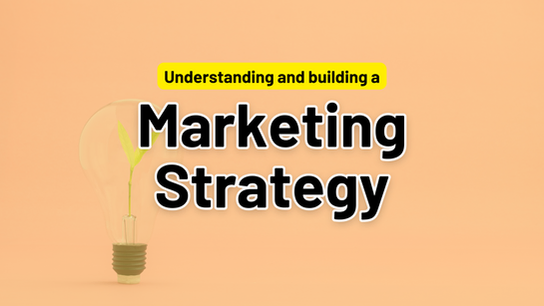Whether you’re new to business or have been established for many years, marketing can seem a minefield, a blackhole you throw money into without understanding whether you’re getting a return on your investment. In its simplest form, convincing a consumer to purchase is all about building Know, Like & Trust in you & your product or service. If a combination of the below points allows someone looking for what you offer to tick all three of those boxes, they become a customer.

Here are a few basic steps to help you better understand marketing and ensure you get a return on your efforts. But remember, keep detailed notes on what marketing you are completing and where the sales are coming from. Information is king to spending in the right areas.
Ok, so let’s get started.
USP or Unique Selling Proposition
This should be your first priority in a marketing strategy. A USP defines what sets your business apart from the competition and is essential for creating a strong brand identity. A clear and compelling USP can help a small business stand out in a crowded market and attract loyal customers. Ideally you should be able to come up with three strong differentiators that makes your business unique. It’s OK if your competitors can match you for one or two of the points but you need to be the only one owning all three.
Target market
Identifying and understanding your target market is crucial for any marketing strategy. You need to know & understand who your ideal customers are, what their needs and pain points are, and how to effectively reach and engage with them. Create an avatar of your ideal client so that you & your staff have a clear vision of who you are trying to attract. Where do they live, work, socialise. What type of car do they drive and what age are they. Understand who your ideal buyer is & suddenly you can communicate in a way that they hear through all of today’s marketing noise.

Marketing plan
Developing a comprehensive marketing plan is essential for your small business to effectively allocate resources and achieve marketing goals. This includes determining marketing objectives, strategies, and tactics, and establishing a budget. Planning a 12-month plan and always working 3-months in advance allows you to remain ahead of the curve. Start with the fixed dates in the calendar such as Christmas, Easter, Valentines Day etc then build out from here. Working three months in advance means that Christmas is done & dusted from a marketing perspective by the start of October. This leaves you organised enough to be able to react to news or industry specific events as they happen.
Inbound marketing
Inbound marketing involves creating valuable content that attracts potential customers and nurtures them through the sales funnel. This approach can help you build trust and establish authority in your industry, leading to long-term customer relationships. The easiest way to create inbound marketing is to become an authority in your field. A series of “How to” videos or buying advice that are practical, impartial and in no way a sales pitch posted where potential clients are drawn to or where search engines direct traffic. Offer eBooks or short downloadable tutorials in exchange for an email address. The key to inbound marketing is to be seen as an authority through relevant & regular & impartial articles. Try adding a sales element and you’ll reduce credibility.
Telling your story
Every business has a unique story to tell and sharing your story with customers can be a powerful marketing tool. You can use storytelling to connect with customers on an emotional level and differentiate yourself from competitors.
Videos
Video marketing has become increasingly popular in recent years and can be a highly effective way for small businesses to showcase their products or services, tell their story, and engage with customers. With more than 80% of all internet content being consumed via video, it shows the importance of embracing this medium. With less than 20% of your target audience willing to read, how much of your website & marketing material is going unnoticed. Add more video content, its quick & inexpensive. Simply use your Smart Phone for recording videos, it’s as capable as most professional camera equipment and watching a quick YouTube tutorial will make you a master within minutes. Video is so crucial to any form of marketing you do that it can’t be emphasized enough. Embrace video for storytelling, infomercials and client communication, it’s how your customers wanted to receive information so don’t fight it, just do it.

Social media
Social media platforms offer you a powerful way to reach and engage with your target audience. By creating and sharing valuable content, responding to customer inquiries, and building a strong online presence, you can leverage social media to build brand awareness and drive sales.
Guarantees
Offering guarantees can help you build that all important trust element with potential customers by reducing the perceived risk of purchase. You can include money-back guarantees, free trials, or satisfaction guarantees. A strong guarantee masters the trust element of the sales process so, be bold with your guarantee.
Ease of sale
You should aim to make the buying process as easy and convenient as possible for customers. This can include offering multiple payment options, providing clear product information, and streamlining the checkout process. Think Amazon. Within one or two clicks you’re done. Look at your sales process & remove any obstruction to a purchase.
Database
Building and maintaining a database of customer information can be a valuable marketing asset for any small businesses. This can include contact information, purchase history, and preferences, which can be used to personalize marketing efforts and improve customer retention. Once you have a database, make sure you market to them on a regular basis. Marketing to existing clients doesn’t mean trying to sell to them at every contact point. Make your material informative & interesting. Use the rule of four informative contacts for every sales contact. Remember the Know, Like & Trust rule, don’t let your marketing affect the Like element.

Artificial intelligence
While AI may not be essential for your business, it can offer significant benefits in terms of automating routine tasks, improving customer service, and optimizing marketing efforts. The time saved in generating content cannot be underestimated but make sure you read through everything produced and add your own tone & style to create authenticity.
Strategic referrals
Encouraging satisfied customers to refer others can be an effective way for you to acquire new customers and build your brand reputation. Offering incentives or rewards for referrals can help incentivize customers to spread the word. Don’t think of asking for referrals as “begging” for work. If you have offered outstanding service, then your customer is doing their friends & family a dis-service by not recommending you. If you were that good, why would they want their associates to experience a lesser service by purchasing elsewhere. That simple mind shift can make asking for referrals so much easier.
It’s important to note that the order of importance for these marketing strategies may vary depending on your specific needs and goals. However, by prioritizing the development of a strong USP, identifying the target market, and developing a comprehensive marketing plan, you’ll establish a solid foundation for success in your marketing efforts. From there, the remaining strategies can be implemented in a way that aligns with your business’s overall goals and priorities.


